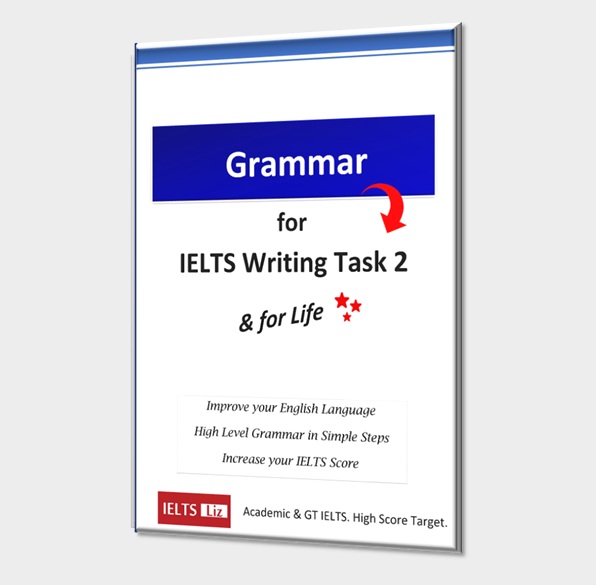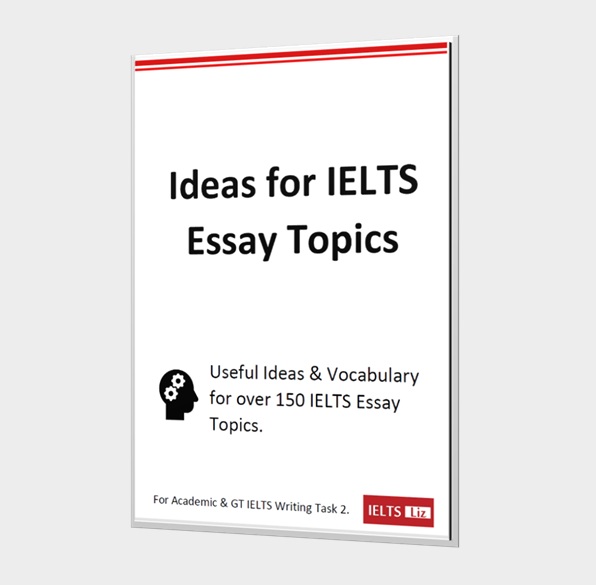Practice and useful tips for tackling IELTS reading matching headings questions. These are one of the most challenging types of question in the reading test. They are certainly the most lengthy and time consuming. Below you will find tips for what these questions require and how to approach them. And there is a reading practice lessons as well.
IELTS Reading Matching Headings Tips
Below are a list of useful tips to tackle these types of matching questions. You definitely need a strategy and familiarity to answer these questions correctly and to do it quickly. Even if you are at native speaker English level, you need practice and strategy or you will waste valuable time.
- You can choose whether to read the passage first or the headings. There is no right or wrong way. You decide what works for you.
- One advantage to the computer reading test is that the headings and passage are side by side on the screen. For the paper test, they are on different pieces of paper.
- Count how many headings you have and how many paragraphs. You will usually have more headings than paragraphs.
- There is only ever one heading that works for each paragraph.
- The headings are basically titles for the paragraph. This means the heading summarises the aim of the entire paragraph.
- This isn’t about matching words or just locating information in the paragraph, it’s about the aim of the whole paragraph.
- Pay attention to headings that are similar or contain similar words. Some headings can appear very similar so you’ll have to pay attention to the way in which they differ.
- Spend time paraphrasing keywords in the possible headings. You will use keywords and key paraphrases to decide which paragraphs or headings are possible. Then you analyse deeper meaning before deciding your answer.
- Read the paragraphs to find the main idea – what is the direction and aim of the paragraph?
- Distinguish between main ideas and extra information in the paragraph.
- There might be a heading which does match some information in the paragraph, but your aim is to find the heading that matches the aim, not just one sentence. So, look out for that when you choose your heading.
- Not all headings will be used.
- Your answer will be a roman numeral, for example, I or VI. Do not write words.
- Remember one correct answer is only worth one point so think about how much time you are spending on these questions. They do take time to answer.
- In the paper test, you’ll see the list of headings first (similar to the reading lesson below). On the computer test, the headings and passage will be side by side, which is easier. Don’t forget the paper test and computer test are not different tests. They are the same test whether you type or write your answers.
IELTS Reading Matching Headings Practice Lessons
Reading Practice 1
Try this reading passage below.
Reading Passage: The Greenhouse Effect
Choose the correct heading (I-IX) for paragraphs A, B, C and D in the passage below.
- I Changing temperatures
- II The greenhouse
- III Global warming
- IV Use of a greenhouse
- V Werne’s research
- VI Earth’s atmosphere
- VII Our choices
- VIII Effects of carbon dioxide
- IX Climates around the world
A. A greenhouse is a house made entirely of glass: both walls and roof are glass. One of the main purposes of a greenhouse is to grow tomatoes, flowers and other plants that might struggle to grow outside. A greenhouse stays warm inside, even during winter. Sunlight shines in and warms the plants and air inside. But the heat is trapped by the glass and cannot escape. So during the daylight hours, it gets warmer and warmer inside a greenhouse, and stays quite warm at night too.
B The Earth experiences a similar thing to a greenhouse. Gases in the atmosphere such as carbon dioxide do what the roof of a greenhouse does. During the day, the Sun shines through the atmosphere. Earth’s surface warms up in the sunlight. At night, Earth’s surface cools, releasing the heat back into the air. But some of the heat is trapped by the greenhouse gases in the atmosphere. That is what keeps our Earth a warm and comfortable 59 degrees Fahrenheit, on average.
C However, gas molecules, called greenhouse gases, which absorb thermal infrared radiation, are rising and this is what is altering the climate system. Carbon dioxide (CO2) and other greenhouse gases act like a blanket, absorbing IR radiation and preventing it from escaping into outer space. The greenhouse effect, combined with increasing levels of greenhouse gases, produces climate change on a global scale, which is expected to have profound implications for all countries around the world.
D Many scientists agree that the damage to the Earth’s atmosphere and climate is past the point of no return or that the damage is near the point of no return. In Josef Werne’s opinion, an associate professor at the department of geology & planetary science at the University of Pittsburgh told Live Science, we have three ways to move forward. Firstly to do nothing and live with the consequences. Secondly, to adapt to the changing climate (which includes things like rising sea level and related flooding protection). Thirdly, mitigate the impact of climate change by aggressively enacting policies that actually reduce the concentration of CO2 in the atmosphere.
The above article was adapted from wiki and livescience.com
MATCHING HEADINGS ANSWERS
Click below:
ANSWERSParagraph A = II
- The answer can’t be IV. The paragraph did contain information about how the greenhouse was used, such as growing vegetables. But that information was not the main aim of the paragraph, it was additional information. If the aim was about it’s uses, there would be more information about using it for various purposes – but that isn’t the aim
- The answer can’t be I about Changing Temperatures. Although there is a lot of mention of temperatures it is only to illustrate how the green house works. The aim isn’t to discuss temperatures and how they change.
- The paragraph actually talked about what it was made of, what it was used for and how it works. The best title would be “The greenhouse” because it gave a clear overview of it.
Paragraph B = VI
- The answer isn’t I because the paragraph actually explains that this natural effect keeps the temperature of Earth stable.
- The answer is VI which explains how Earth’s atmosphere works to keep our planet at a stable temperature.
Paragraph C = III
- The answer isn’t VIII (Effects of carbon dioxide) because the paragraph isn’t not aimed at explaining carbon dioxide and in fact only mentions it along side other greenhouse gases.
- The answer isn’t IX (Climates around the world) because although climates are affected around the world, the whole paragraph aim isn’t to discuss climates in different countries.
Paragraph D = VII
- The answer isn’t V because the paragraph doesn’t actually discuss Werne’s research (which means how he did his studies and the problems with his studies), but rather his opinion’s about what options we have to deal with our changing climate.
.
************************
Reading Practice 2
Reading Passage: The History of Pasta
Choose the correct heading (I-VII) for paragraphs A, B, C and D in the passage below.
- I A theory dismissed
- II Marco Polo in China
- III Is pasta really a popular Italian dish?
- IV China is the origin of pasta
- V The real roots
- VI An Arab taste sensation
- VII The common belief of the origins of pasta
- VIII How about China?
A Worldwide, pasta has become synonymous with Italian cuisine. Italian immigrants themselves brought pasta everywhere they went. While it is true that the most famous varieties and recipes of cooking pasta really do come from Italy, surprisingly, the actual origin of pasta lies elsewhere!
B One of the more popular theories of the arrival of pasta in Italy was published in the ‘Macaroni Journal’ by the Association of Food Industries. It states that pasta was brought to Italy by Marco Polo via China. Polo ventured to China in the time of the Yuan Dynasty (1271-1368) and the Chinese had been consuming noodles as early as 3000 B.C. in the Qinghai province. There is even some evidence there of 4,000-year-old noodles made from foxtail and broomcorn millet.
C Unfortunately, there are problems with this theory, least of which is that the noodles they were making in China aren’t technically considered pasta. Polo also described Chinese noodles as being like “lagana”, which implies he was possibly already familiar with a pasta-like food before going to China. Further, in 1279, there was a Italian Genoese soldier that listed in the inventory of his estate a basket of dried pasta. However, Polo did not come back from China until 1295. Furthermore, the modern pasta we know today was first described in 1154 by an Arab geographer, Idrisi, as being common in Sicily. So Marco Polo could not have brought pasta to Italy via China. It was already in Italy at that time.
D Most food historians believe that Arabs (specifically from Libya) are to be credited for bringing pasta, along with spinach, eggplant and sugar cane, to the Mediterranean. In the Talmud, written in Aramaic in the 5th century AD, there is a reference to pasta being cooked by boiling. It is thought, then, that pasta was introduced to Italy during the Arab conquests of Sicily in the 9th century AD, which had the interesting side effect of drastically influencing the region’s cuisine. It also known that by the 12th century, the Italians had learned from the Arabs methods for drying pasta to preserve it while traveling. Further support for this theory can be found by the fact that, in many old Sicilian pasta recipes, there are Arab gastronomic introductions. One example of cross cultural recipes is Barida, which is an old Arab recipe with Roman clear roots.
Source: Passage was adapted from: todayIfoundout.com.
MATCHING HEADINGS ANSWERS
Click below:
ANSWERS- A = VII
- This paragraph is all about what we think is the origins of pasta. It opens up the topic of where pasta really comes from.
- The answer cannot be III (Is pasta really a popular Italian dish?) because it is not about how popular pasta is as a dish within Italy.
- The answer isn’t I (A theory dismissed) because the paragraph isn’t about a theory, but about a common belief – a common opinion or thought.
- The answer cannot be V (The real origins of pasta) because the paragraph aim is not to talk about the real origins but instead just to introduce the idea that is isn’t Italy.
- B = VIII
- This paragraph offers yet another common belief which is that pasta comes from China. For this reason, “How about China” which means is China the real origin fits with the whole aim of the paragraph.
- The answer isn’t I (A theory dismissed) because although the paragraph does present a theory, it does not aim to dismiss it.
- The answer isn’t II (Marco Polo in China) because although it mentions Marco Polo, the aim isn’t not to discuss his time in China.
- The answer isn’t IV (China is the origin of pasta) because the paragraph isn’t aimed to convince us that China is the origin but rather to introduce the theory that it could be.
- C = I
- This paragraph is all about dismissing the theory that was introduced in the previous paragraph – that pasta was introduced to Italy by Marco Polo when he came from China.
- D = keep reading:
- There are two possible headings for this paragraph
- V The real roots
- VI An Arab taste sensation
- We do see the word “roots” used in the paragraph.
- We do see the paragraph is about an Arab food.
- But which heading works? The key is meaning:
- – taste sensation – means a powerful, incredible, delicious experience of flavour in an ingredient or dish. This paragraph give no description of this and it certainly isn’t an aim of the paragraph to talk about something full of amazing flavour.
- – roots – we need to look more carefully at this word. We use the word “root” to talk about an origin of something. This paragraph really does talk about the origin of pasta. It is about the real roots of pasta. In the paragraph, the word “root” as in reference to one particular dish that had Roma roots with Arab influence. This word acted like a distractor – to confuse the reader about the real heading.
- The answer is V (The real roots)
- There are two possible headings for this paragraph
.
I hope you enjoyed the lessons. All the best, Liz
**********************
RECOMMENDED FOR YOU
- Matching Headings Practice (another lesson)
- Matching Paragraph Information Reading Practice
- Note: this is a different type of question. Highly recommend you nail this one too.
- TFNG Reading Practice
- Yes, No Not Given Reading Practice with Tips
- ALL READING PRACTICE LESSONS & TIPS
.





